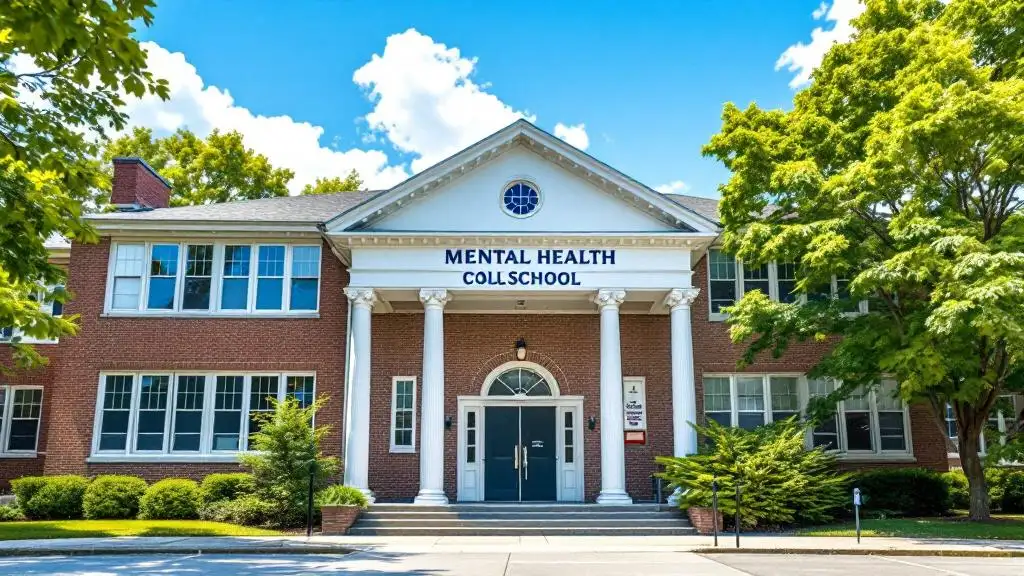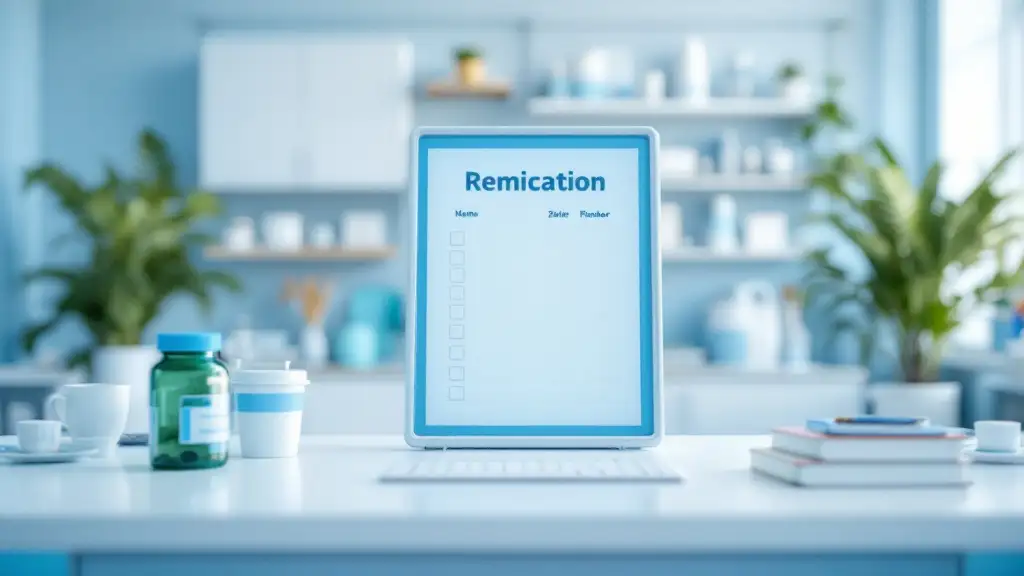Understanding the Surge in Home-Based Mental Health Services
The demand for mental health services in the United States has surged dramatically over recent years, driven by factors such as the COVID-19 pandemic, workforce shortages, and increasing mental health awareness. In this context, in-home psychiatric evaluations have emerged as a vital component of the broader mental health care landscape, offering accessible and tailored support to diverse populations. This article explores the increasing demand for in-home assessments, their benefits, the current state of evidence, and the systemic challenges faced in expanding these services.
Assessing the Growing Demand for Behavioral Health Services
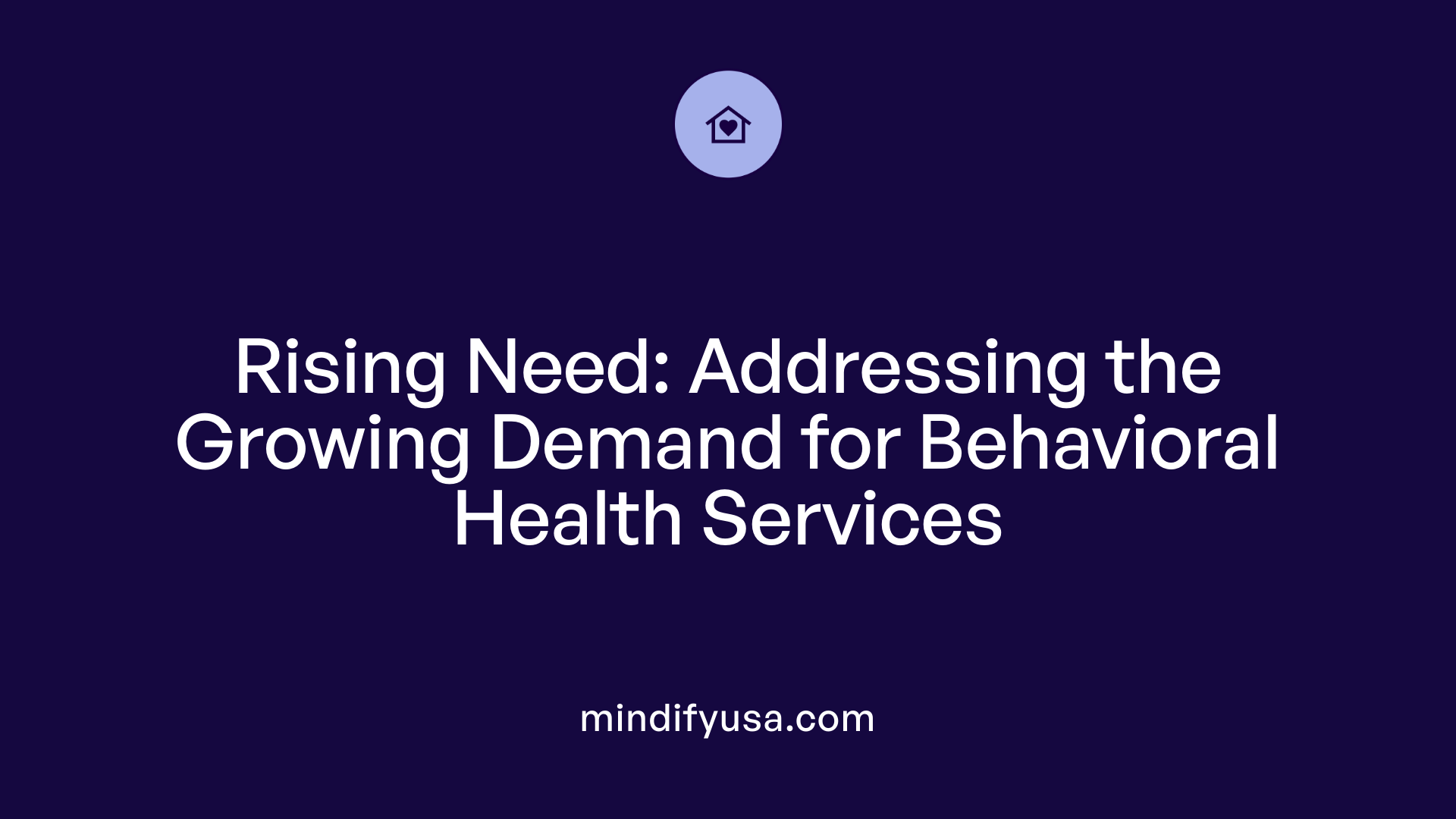
Prevalence of mental health issues in the US
In the United States, mental health concerns are widespread. Recent estimates indicate that over 53 million adults experienced a mental illness in 2020. Additionally, approximately 40 million people aged 12 or older, representing 14.5% of the population, suffered from substance use disorders.
The staggering numbers highlight the significant scope of mental health needs across the country. Alarmingly, less than half of those affected by common mental health conditions receive any formal treatment, exemplifying a substantial gap in access to care.
Impact of COVID-19 pandemic on mental health
The COVID-19 pandemic has severely intensified mental health challenges nationwide. Many individuals faced trauma, grief, and heightened stress due to unforeseen disruptions in their lives. This surge in psychological distress has led to a dramatic increase in demand for mental health services.
Psychologists across the nation report a rise in patients with worsening symptoms, often requiring longer treatment durations. Over half of surveyed psychologists indicated they have no available openings for new patients, with wait times extending beyond three months in many cases.
The pandemic not only increased the demand for services but also strained the mental health workforce. Many providers experienced burnout, further exacerbating the staffing shortages that already hinder access to care.
Is there a growing demand for mental health services?
The answer is a resounding yes. The demand for behavioral health care in the United States is large and growing. Data from the Substance Abuse and Mental Health Services Administration (SAMHSA) found that 1 in 5 adults, adolescents, and youth—equivalent to over 50 million Americans—experienced a behavioral health issue between 2019 and 2020. The confluence of increased mental health problems during the pandemic and existing workforce shortages underscores the urgent need for expanded, accessible mental health services.
| Aspect | Details | Additional Notes |
|---|---|---|
| Mental health prevalence | Over 53 million adults with mental illness, 40 million with substance use disorders | Reflects widespread mental health burden |
| Service gap | Less than 50% of affected receive treatment | Significant unmet needs |
| Pandemic impact | Increased psychological distress, longer wait times | Strain on providers and infrastructure |
| Workforce challenges | Shortages, burnout, aging workforce | Critical for planning future mental health strategies |
Understanding these trends emphasizes the importance of innovative approaches such as home-based care, telepsychiatry, and workforce expansion efforts to bridge the care gap in the face of rising mental health needs.
Benefits of In-Home Psychiatric Evaluations for Patients and Families
What are the benefits of in-home psychiatric evaluations for patient care and quality of life?
In-home psychiatric evaluations provide a range of advantages that greatly enhance patient care and overall quality of life. By bringing assessments directly into the patient's environment, these evaluations create a comfortable and familiar setting, which can help reduce anxiety and promote openness during the process.
This approach allows for tailored, accessible care that can better capture the patient's real-life functioning and social circumstances. Such personalized assessments often lead to more accurate diagnosis and effective treatment plans, which can improve symptom management and help prevent unnecessary hospital visits.
Moreover, in-home evaluations enable continuous monitoring and support for individuals with chronic mental health conditions. Early intervention becomes easier when providers can observe day-to-day challenges and strengths, ultimately reducing treatment costs and promoting independence.
Another benefit is the strengthening of relationships between patients and healthcare providers. Regular, in-home interactions foster trust and better communication, encouraging better treatment adherence. They also facilitate the development of psychosocial skills and resilience, which are crucial for long-term recovery.
For caregivers and families, in-home assessments help identify caregiver stress and mental health issues, ensuring they receive appropriate support. Recognizing and addressing these factors can improve family dynamics and overall caregiver well-being.
In conclusion, integrating in-home psychiatric evaluations into mental health services supports a holistic approach that improves patient satisfaction, increases adherence to treatment, and enhances the quality of life not only for patients but also for their loved ones.
Current Evidence and Effectiveness of In-Home Mental Health Services
What is the current state of research and evidence supporting in-home psychiatric evaluations?
Recent studies show that programs like the Home-Based Mental Health Evaluation (HOME) have a positive impact on engagement in mental health treatment. Veterans participating in the HOME Program were 1.33 times more likely to engage in follow-up care after hospitalization compared to those receiving standard care. These patients attended 55% more outpatient appointments and started treatment approximately 15 days sooner, demonstrating improved access and timeliness.
Beyond veteran populations, evidence indicates that in-home psychiatric assessments and services can effectively reduce symptoms and hospitalizations, especially among older adults with chronic mental health conditions. Home care services often include psychiatric evaluations, medication management, and psychosocial support, which contribute to lowering symptom severity and preventing unnecessary hospital admissions.
Studies also suggest that utilizing home-based mental health care leads to decreased healthcare costs by reducing inpatient stays and outpatient visit frequency. For example, moderate evidence supports that Home Health Inpatient Telehealth (HITH) services can cut hospital admissions by 30-50%, supporting their role as a viable alternative to inpatient care for suitable patients.
However, while findings are promising, the overall research landscape faces limitations. Many studies rely on observational data or small sample sizes, and there is a scarcity of large-scale, randomized controlled trials. The heterogeneity of types of services, patient populations, and outcome measures makes it challenging to draw definitive conclusions.
Emerging digital solutions, such as telepsychiatry and social support platforms, are also expanding the scope of in-home mental health evaluation and intervention. These approaches improve access, particularly for rural or underserved communities, complement traditional services, and foster ongoing engagement.
In summary, current evidence supports the effectiveness of in-home psychiatric evaluations and services in increasing engagement, reducing symptoms, and decreasing hospital utilization. Nonetheless, more rigorous research is necessary to establish standardized best practices and to better understand which models of in-home care produce optimal outcomes.
Telepsychiatry and Remote Mental Health Services in Addressing Increased Demand
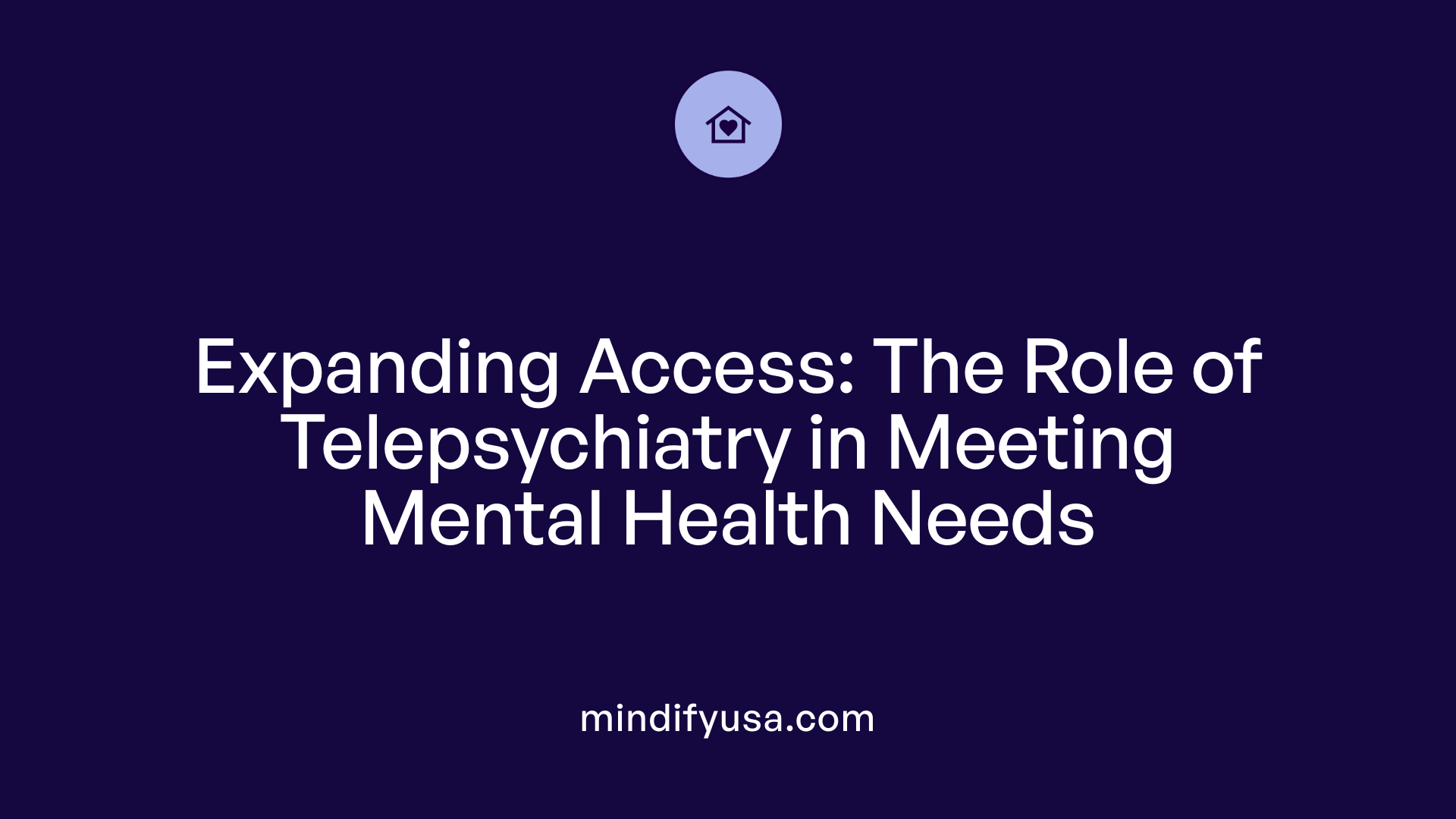
How are telepsychiatry and remote mental health services contributing to meeting increased demand?
The surge in mental health needs, amplified by the COVID-19 pandemic, has placed significant pressure on traditional in-person services. Telepsychiatry and remote mental health services have emerged as vital tools in expanding access to care. They utilize various virtual platforms such as video conferencing, phone calls, and online messaging to deliver services directly to patients' homes.
These modalities are proving to be as effective as face-to-face therapy for many mental health conditions, including anxiety, depression, trauma-related disorders, and even medication management. For example, studies have shown positive outcomes in symptom reduction and treatment adherence when using telehealth approaches.
The convenience and safety of remote services have increased patient acceptance, making it easier for individuals, especially in rural and underserved communities, to seek and continue treatment. This is crucial given the widespread shortages of mental health providers, particularly in rural areas where 75% of US counties experience shortages.
Policy revisions have played a critical role in this expansion. Reimbursement policies have adapted to support telehealth, including coverage for audio-only visits and expanded provider eligibility under Medicare and Medicaid. Interstate licensure agreements have also been streamlined, allowing providers to offer services across state lines.
Overall, telepsychiatry not only helps meet the rising demand but also promotes more equitable access to mental health services, reducing disparities caused by geographic and socioeconomic barriers. As the technology continues to evolve, its role in the mental health care landscape is expected to grow, ensuring that more individuals receive timely and effective support.
In-House Psychiatric Evaluations: Increasing in Response to Market Needs
Are in-home psychiatric evaluations increasing in demand?
Yes, in-home psychiatric evaluations are experiencing a significant rise in demand. This trend is largely driven by the ongoing mental health crisis affecting millions, with about 56 million Americans experiencing mental illness and a growing recognition of the limitations in traditional clinic-based services.
The COVID-19 pandemic has played a crucial role in accelerating this shift. As the need for accessible mental health care skyrocketed, remote assessment models and in-home services became essential solutions. Telehealth has proven effective in this transformation, enabling rapid intake programs that allow patients to receive evaluations without leaving their homes.
Shortages of mental health providers further contribute to this increase. The current waiting times often extend beyond three months for an initial appointment, making in-home evaluations a practical alternative. These in-home services not only reduce wait times but also improve treatment access, especially for those in rural and underserved areas where provider shortages are most acute.
Technological innovations have supported this growth. Digital tools and telepsychiatry platforms facilitate remote assessments that are convenient and reliable. In-home psychiatric evaluations, including digital screenings and virtual consultations, allow practitioners to deliver comprehensive care effectively.
In summary, the combined pressures of systemic provider shortages, long waitlists, and the ongoing mental health and opioid crises have fueled the demand for in-home psychiatric services. This trend is expected to continue expanding as healthcare systems aim to meet the increasing need for accessible, timely mental health assessments.
Systemic Challenges and Policy Reforms Impacting Access
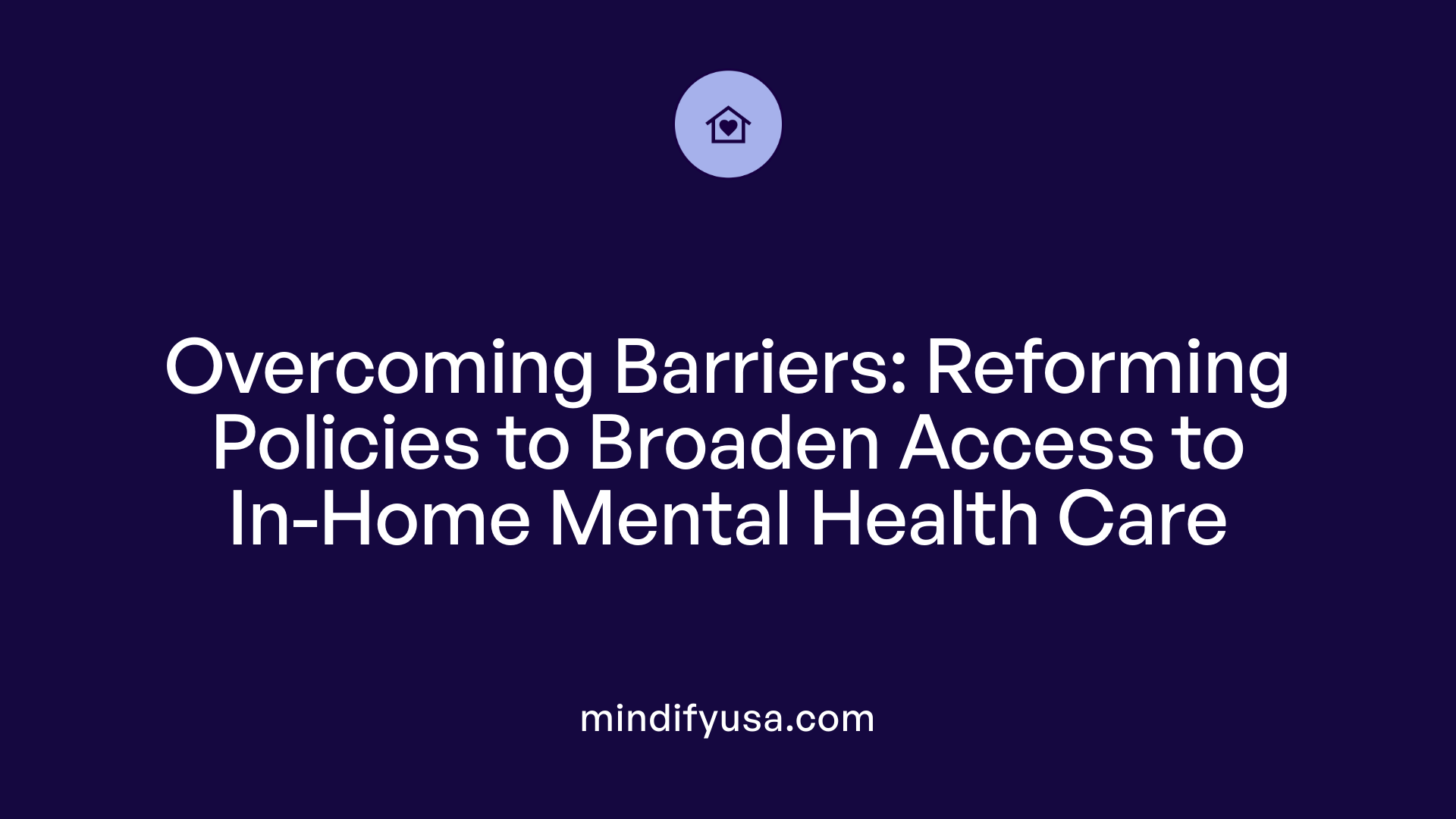
What systemic issues and policy considerations are affecting access to in-home mental health care?
Access to in-home mental health services in the United States faces multiple systemic hurdles that limit their reach and effectiveness. One of the primary issues is the shortage of mental health professionals, especially in rural and underserved areas. According to recent data, over 43% of the U.S. population lives in regions designated as mental health workforce shortage areas. This disparity is worsened by a maldistribution of providers, where many practitioners prefer urban or affluent locales, leaving vulnerable populations underserved.
Funding and reimbursement challenges further restrict access. Many insurance plans, including Medicare and Medicaid, offer limited coverage or high out-of-pocket costs for home-based services. Low reimbursement rates discourage providers from offering in-home care, and bureaucratic hurdles such as prior authorization add delays to treatment.
Policy initiatives are playing a vital role in addressing these barriers. Expanding Medicaid, enforcing mental health parity laws, and increasing telehealth capabilities are emphasized strategies. For example, recent policy changes have authorized deployment of telepsychiatry, which greatly enhances access, especially in isolated regions.
Additionally, workforce expansion efforts include enabling licensed practitioners like marriage and family therapists, counselors, and psychiatric nurses to provide services under new Medicare and Medicaid provisions. These initiatives aim to increase the pool of qualified providers and reduce waiting times.
Social determinants such as stigma and socioeconomic inequalities also impact the accessibility of mental health care. Marginalized communities often face mistrust or lack the resources to seek help, exacerbating health disparities. Addressing these systemic and social barriers requires a multi-faceted approach involving policy reform, community engagement, and increased funding.
In summary, overcoming these challenges necessitates comprehensive reforms focused on increasing provider capacity, improving insurance coverage, and reducing geographic and social disparities. Such efforts are crucial for expanding equitable access to vital in-home mental health services, ultimately supporting better outcomes for those with chronic mental health conditions.
Addressing Workforce Shortages Through Policy and Innovation
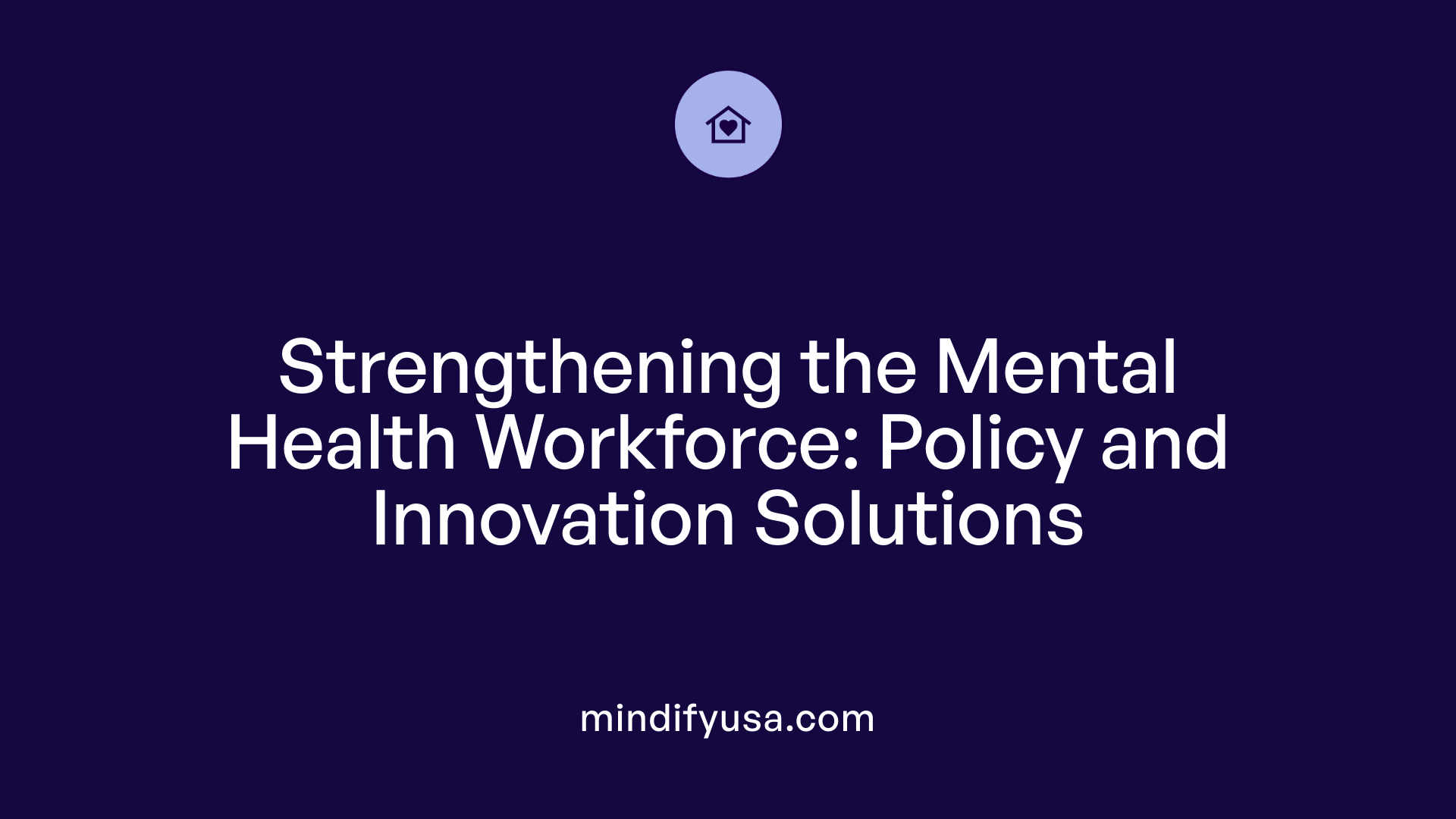
What are the systemic issues affecting the mental health workforce and how can they be addressed?
The mental health field is facing a severe shortage of trained professionals, including psychiatrists, psychologists, counselors, and social workers. One major issue is the aging workforce, with many practitioners nearing retirement age, which will soon leave a significant gap in service providers.
Adding to the challenge is the uneven distribution of mental health providers, especially in rural and underserved regions like some U.S. counties where up to 75% lack adequate practitioner numbers. This imbalance limits access to care for many populations.
Systemic problems also include high entry barriers into the profession, relatively low compensation, societal stigma around mental health careers, and insufficient specialized training for working with diverse populations. These factors slow workforce growth and contribute to service gaps.
Addressing these issues requires a comprehensive strategy:
- Increasing funding for training programs, internships, and residency spots.
- Offering financial incentives like scholarships, loan forgiveness, and grants to attract new entrants.
- Expanding telehealth services to reach remote areas and reduce geographical barriers.
- Developing new roles such as health support workers trained in mental health basics, and increasing the scope of nurse practitioners in behavioral health.
- Implementing policies that streamline licensing processes and promote workforce diversity.
- Improving reimbursement models for mental health services to make careers more financially sustainable.
Policy reforms must also focus on removing societal stigmas, promoting cultural competence training, and ensuring equitable access to specialized care. By combining these approaches, the mental health system can cultivate a more resilient, diverse workforce capable of meeting rising demand and addressing disparities in mental health care access.
Systemic and Policy Initiatives to Broaden Access and Effectiveness
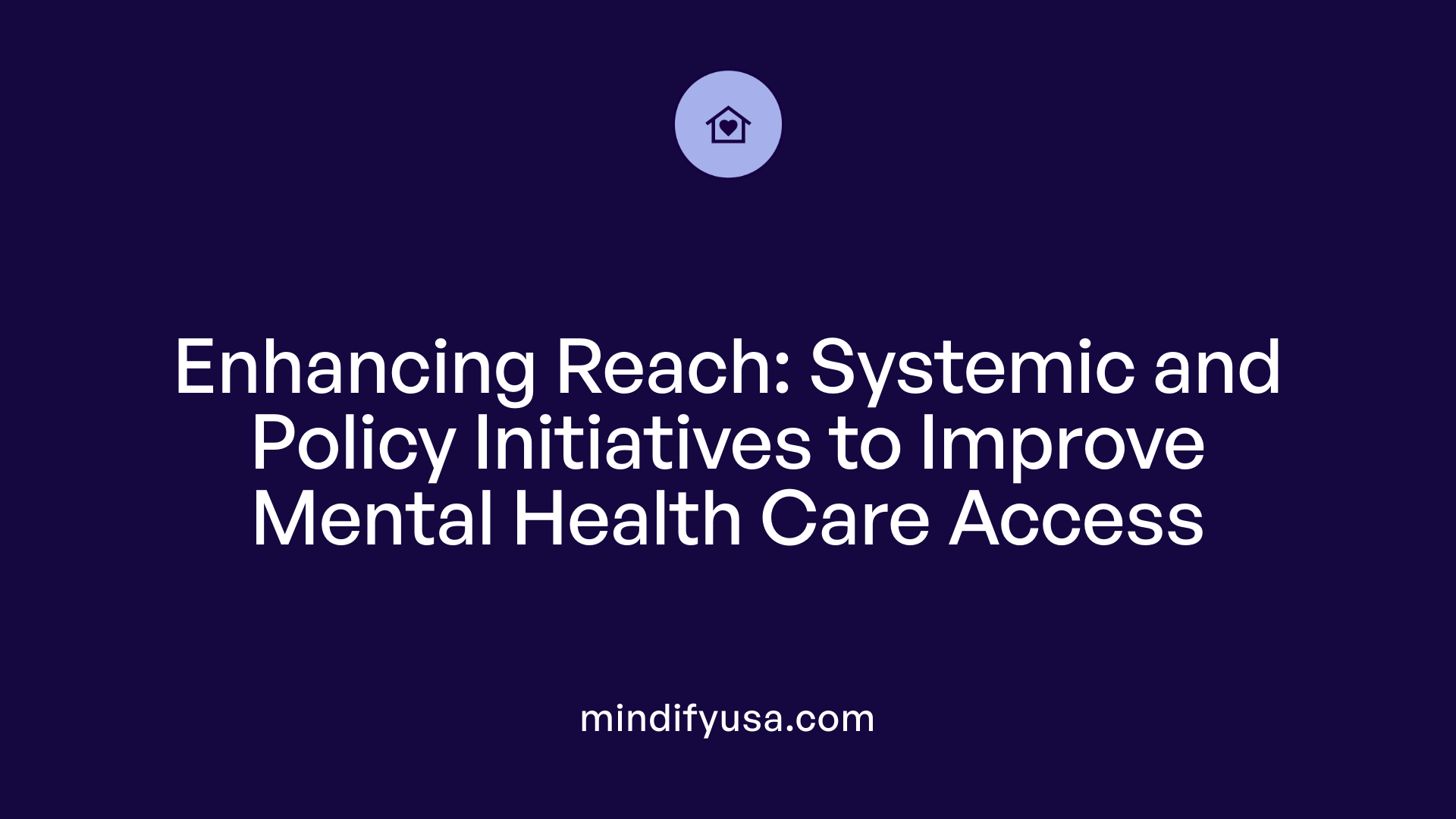
What systemic issues and policy considerations are affecting access to in-home mental health care?
Access to in-home mental health services faces several significant challenges rooted in systemic issues. A primary concern is the persistent shortage of mental health professionals, including psychiatrists, psychologists, therapists, and specialized nurses, especially in rural and underserved communities. This uneven distribution limits the availability of care in areas where it is needed most.
Funding constraints and low reimbursement rates further restrict service provision by making it less financially sustainable for providers. Insurance barriers such as prior authorizations, narrow network restrictions, and limited coverage options can delay or prevent patients from receiving timely in-home care.
Policy reforms play a vital role in addressing these issues. Expanding Medicaid and other insurance coverage to include a broader range of home-based services is crucial. Enforcing mental health parity laws ensures that mental health treatments are on equal footing with physical health services, facilitating better access.
Advances in telehealth, including telepsychiatry and remote evaluations, offer promising solutions to reach those in hard-to-access areas. These technological shifts rely on expanding digital infrastructure and regulatory support.
Workforce expansion is equally important. Initiatives to recruit, train, and retain more mental health providers, especially in rural settings, are vital. Developing community-based programs, leveraging non-traditional health workers, and supporting in-home care models can mitigate provider shortages.
Beyond health systems, social determinants such as stigma, socioeconomic barriers, and social inequities continue to restrict equitable access. Socioeconomic disparities can lead to delayed treatment or untreated mental health issues, worsening outcomes.
Addressing these interconnected barriers requires comprehensive policy reforms. These reforms should focus on increasing funding, incentivizing provider placement in underserved areas, expanding telehealth services, and reducing social stigma. Such measures will help create a more equitable and effective mental health care system capable of delivering in-home services to those who need them most.
Future Outlook: Technology and Policy as Catalysts for Expansion
How can systemic reforms and technological advancement support the future growth of in-home psychiatric evaluations?
Advancements in technology and proactive policy reforms are critical drivers for increasing access to in-home psychiatric evaluations. Systemic reforms that focus on securing increased funding, revising reimbursement structures, and expanding the mental health workforce—such as including more licensed practitioners like psychiatrists, psychologists, and counselors in Medicare and Medicaid—will make in-home services more attainable.
The rapid growth of telehealth, especially telepsychiatry, has been a game-changer, allowing providers to reach patients in remote and underserved areas. Digital platforms enable remote assessments, continuous symptom monitoring, and virtual therapy sessions, significantly reducing geographic and transportation barriers.
Innovative care delivery models are emerging, integrating telehealth with home visits and social support systems. For instance, remote monitoring devices can help track patient health data between visits, improving diagnosis and treatment adjustments.
Furthermore, efforts to destigmatize mental health issues and focus on social determinants of health will complement these technological solutions. Collectively, these systemic and technological efforts will help meet rising mental health demands, reduce hospitalizations, and foster patient independence, shaping a more accessible and efficient future for in-home psychiatric evaluations.
Conclusion: Embracing a Hybrid Model for Mental Health Care
The increasing demand for in-home psychiatric evaluations underscores the need for a comprehensive approach that leverages both technological innovation and systemic reforms. By expanding access through telehealth, policy support, and workforce development, healthcare systems can better meet the growing mental health needs of diverse populations. Integrating in-home services with traditional outpatient care offers the promise of improved patient outcomes, increased satisfaction, and reduced burdens on hospitals and emergency services. Embracing a hybrid model that combines in-person, remote, and home-based evaluations will be crucial for creating a resilient, equitable mental health care system capable of addressing today's challenges and future demands.
References
- Efficacy of the Home-Based Mental Health Evaluation (HOME ...
- Quality of life for chronic psychiatric illnesses and home care - PMC
- Hospital-in-the-Home as a Model for Mental Health Care Delivery
- [PDF] Expanding Mental Health Care Services in America:
- Mental Health Home Care - Amedisys
- Home-Based Mental Health Services for Older Adults: A Review of ...
- Psychologists say they can't meet the growing demand for mental ...
- Telepsychiatry Market Sees Rapid Growth With 20.1% CAGR
- A closer look at the mental health provider shortage
- The Mismatch between Mental Health Care Access and Demand












